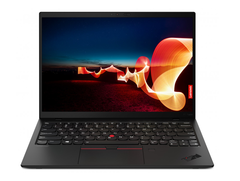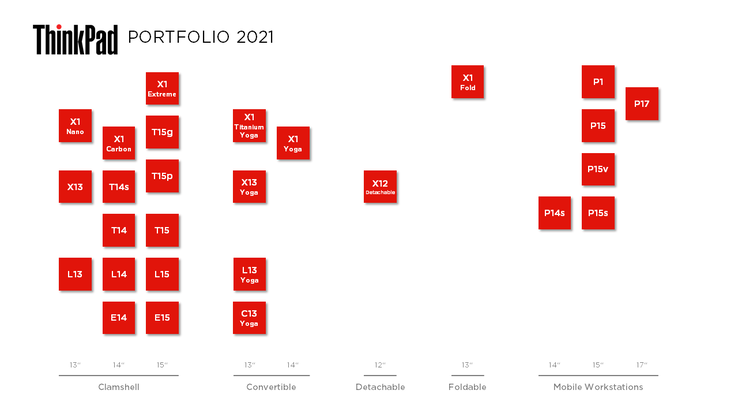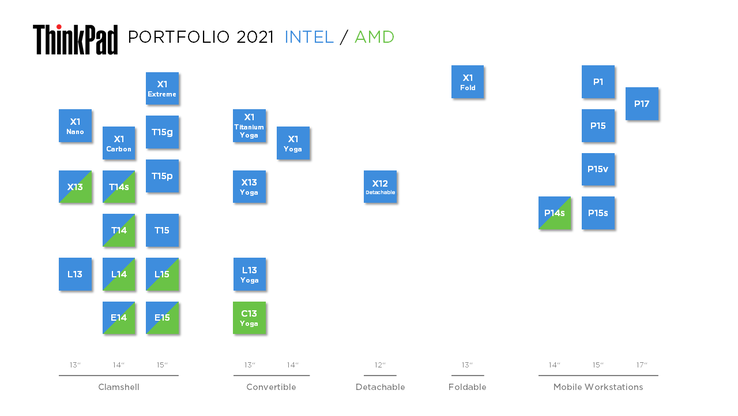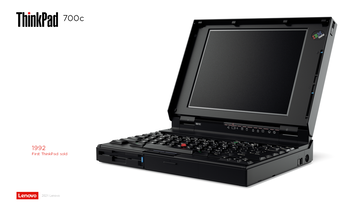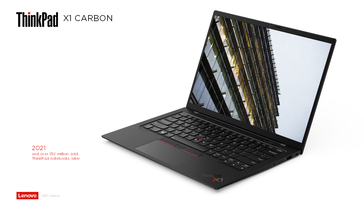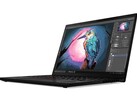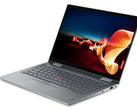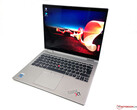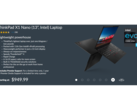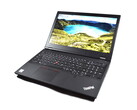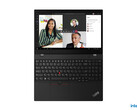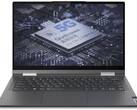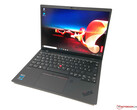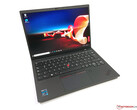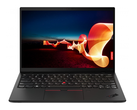We just reviewed the brand-new Lenovo ThinkPad X1 Nano and the very compact and lightweight business laptop left a good impression in many respects, but there were also some decisions that left us with questions.
Notebookcheck had the chance to talk with Michael Weigelt (Business Development Manager) from Lenovo Germany about the new ThinkPad X1 Nano as well as the ThinkPad X1-series and the ThinkPad line-up in general. It was a virtual interview and the questions for Notebookcheck were asked by Andreas Osthoff. This is a translated version of the original German interview, which is available here. Please see our comprehensive review of the ThinkPad X1 Nano for more information about the device:
ThinkPad X1 Nano
Notebookcheck: The ThinkPad X1 Nano is a new member of the X1 family. What was the idea behind it and what is the target customer group?
Michael Weigelt: The X1 sub-brand is supposed to offer products for very demanding customers. In addition to ThinkPads, there has also been a ThinkCentre X1 (desktop PC) and ThinkVision X1 (display). Now we launched three new devices without direct predecessors: X1 Fold, X1 Nano, and X1 Titanium Yoga. They are made possible thanks to new Tiger Lake processors from Intel (10 nm), which allows us to build much smaller and thinner motherboards. Motherboards are typically located underneath the keyboard. The motherboard of the X1 Titanium Yoga on the other hand is located above the keyboard and the size is similar to a typical desktop memory module. The ThinkPad X1 Titanium Yoga is the thinnest and the ThinkPad X1 Nano the lightest ThinkPad on the market. The X1 Fold on the other hand is a completely new concept for a mobile device.
Notebookcheck: Is the carbon fiber cover available for both display options and will Lenovo offer displays with higher resolutions for the X1 Nano?
Michael Weigelt: The carbon fiber cover is only available for the touch display and it is just a visual feature. There are no differences in terms of lid construction. I cannot rule out the possibility of higher display resolutions, but it is not planned in the foreseeable future. We offer a very good compromise between picture quality and power consumption with the 2K resolution.
Notebookcheck: Our review showed that the cooling solution is very efficient and the Tiger Lake UP4 chip is running significantly above the specifications from Intel. Why did Lenovo not just use a "regular" UP3 processor, which would have offered slightly more graphics performance?
Michael Weigelt: The advantage of the UP4 chips is the lower space requirements, which allows us to build more compact devices. Our models X1 Nano, X1 Titanium, and also the X12 Detachable are therefore only offered with the UP4 versions of the Tiger Lake processors.
Notebookcheck: The ThinkPad X1 Nano does not offer a modern PCIe-4.0 interface for the SSD, despite the new Tiger Lake processor, and the power button is located at the left side of the case, which occupies valuable space that could be used for another port. The upcoming ThinkPad X1 Carbon G9, for example, will get the power button at the top of the base unit.
Michael Weigelt: The ThinkPad X1 Nano is launched in the beginning of 2021, but it is the last device from Lenovo with the model year 2020, so it was part of this development process. This means the SSD is attached via PCIe-3.0-x4 interface and the power button is located at the side. The upcoming ThinkPad X1 Carbon G9 on the other hand is one of the first devices from model year 2021. All devices from model year 2021 (also convertibles) will have the power button at the top with an integrated fingerprint reader.
Notebookcheck: The key travel on the ThinkPad X1 nano was reduced to 1.35 mm. In the past the key travel was already reduced from 1.8 to 1.5 mm on the X1 Carbon. We understand that Lenovo cannot ignore the trend towards slimmer devices, but are you not afraid to lose a key feature of the ThinkPad-series?
Michael Weigelt: We do not waive keyboards with 1.8 or 1.5 mm for the ThinkPads in general. The upcoming models of the ThinkPad X1 carbon G9 and ThinkPad X1 Yoga G6 definitely keep 1.5 mm key travel. Many devices, for instance the T or L-series, still offer 1.8 mm key travel.
It was a conscious decision to make the X1 Nano as compact and lightweight as possible. This means you have to make compromises during the development process and you start to look where you can save space. Compromise number one in this case is the keyboard; compromise number two is the port selection with 2x USB-C/Thunderbolt 4. This will obviously disappoint some ThinkPad fans, but it was necessary to realize such a thin and light notebook. The X1 Nano can still be maintained though; it is easy to open and all components can be replaced by service technicians.
ThinkPad X1 Series
Notebookcheck: Why are the X1 models limited to Intel processors so far? How did business customers accept the AMD versions of other ThinkPad models?
Michael Weigelt: Lenovo tries to expand the AMD portfolio with every generation. We want to give AMD and its powerful processors a platform, and it helps us to ensure better availability of our products. We started with AMD processors in the lower price range (ThinkPad E485), because the AMD CPUs are a bit less expensive. Since then, we are offering more and more products and offer the X13 and T14s as AMD versions right now, for example. However, it is also important to see how big the demand for a particular model is and if it makes sense to invest the additional development costs if there is just a small target group.
Business customers were initially reserved when it comes to changes that might affect their software distribution or driver management, but the AMD models were a good alternative when we had supply issues in general. By now, there are hardly any reservations anymore. Some individual customers still prefer Intel, but AMD is at least on par from our point of view.
Notebookcheck: Many manufacturers once again start to offer larger 16 or 17-inch models like Dell with the XPS 17. Will Lenovo offer something similar, for example a ThinkPad X1 Extreme with a 17-inch screen?
Michael Weigelt: There is no product announcement in the foreseeable future. The 17-inch market is very small in general. Lenovo did not offer a 17-inch device for a couple of years and we returned with the P-series due to the demand from some workstation customers, but it is a niche market.
Notebookcheck: The X1 models are not WWAN-ready anymore. You can get WWAN from the factory, but it is not upgradeable. What is the reason for this limitation?
Michael Weigelt: We try to offer WWAN-ready models for the ThinkPad T and L-series, because we often see that these models are upgraded. These devices are often used for the majority of employees, and business customers like the possibility to upgrade WWAN models for certain groups of employees. However, we do not see this for X1 models, which is why WWAN modules cannot be upgraded.
Notebookcheck: ThinkPad constructions in the past were extremely robust and almost "rugged". Modern devices are much thinner and often do not appear as robust or durable. Competitors like Dell offer some rugged versions of their laptops, is Lenovo planning something similar?
Michael Weigelt: The ThinkPads have become thinner over the last couple of years, but there have been big advancements in terms of materials and we also use better materials like carbon, aluminum, or titanium, which enable us to make very robust devices that are thin and light at the same time. ThinkPads are still tested according to military standards and the requirements and number of tests are higher by now. A modern and thin ThinkPad is therefore not "less robust" than a ThinkPad from 20120. We also offer dedicated protective cases for models that can be used on the road (like the X12 Detachable Windows tablet) to prevent visual damages when the device is dropped, for example.
Notebookcheck: ARM is currently a big topic, especially thanks to the push from Apple. Microsoft also works on the support of x64 apps. Is something planned from Lenovo?
Michael Weigelt: Lenovo already offered models with ARM SoCs in the consumer space, but ThinkPads are designed for business customers, where experiments are not appreciated. The eco system has to be reliable before we can offer business devices with ARM chips.
Notebookcheck: Was the ThinkPad 25 Anniversary Edition a success and is something similar planned for the 30th anniversary? Some customers would still like to see a 7-row keyboard.
Michael Weigelt: Yes, it was a success, let alone thanks to the high number of press releases and because it was a great fan service for ThinkPad enthusiasts. Limited models with small quantities are always challenging from a commercial standpoint, but we did it because it was an affair of the heart for us.
We want to move away from such a "technical look" for a ThinkPad; a ThinkPad should also have an interesting design, and one of the elements is to make the keyboard more coherent. The lack of the 7th keyboard row obviously has space advantages as well. We cannot deny the trend towards thinner and lighter devices.
Notebookcheck: ThinkPads do not offer expandable batteries since 2019 anymore - why was this feature (PowerBridge) removed from all models and will this technology return in the foreseeable future?
Michael Weigelt: PowerBridge was a great feature with a very good concept. The disadvantage (for all replaceable batteries in general) is the increased space requirements. It is therefore the first thing you touch when you want to save weight and space.
The quality of modern batteries is much higher at the same time, and the number of charging cycles, which have to be passed by the battery, is also much higher. There are obviously still some isolated cases where batteries fail on modern devices, but we do not get negative feedback/comments from customers in this regard.
Notebookcheck: Dell has removed the Pointing Stick from its Latitude laptops. Does Lenovo plan something similar?
Michael Weigelt: Nobody can say what happens in 10 years, maybe we will not have keyboards anymore. But there are definitely no plans to let the TrackPoint on ThinkPads die. The X1 Fold is one exception, because the attachable keyboard does not offer a TrackPoint, but this is a result of the mechanics and the limited space. There are still many of the same engineers in the ThinkPad development in Japan back from the days when IBM was responsible for the design of ThinkPads. The TrackPoint is just an essential part of a ThinkPad and we will continue to offer ThinkPads with TrackPoints for a very long time. We also believe the TrackPoint is the more ergonomic input method compared to a touchpad.
We want to thank Lenovo Germany and Michael Weigelt for the comprehensive interview.




